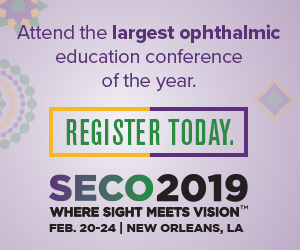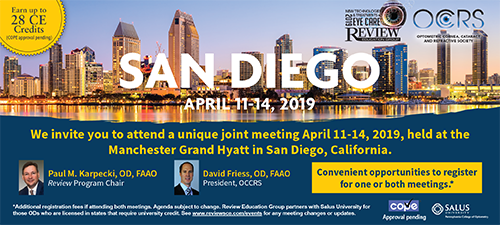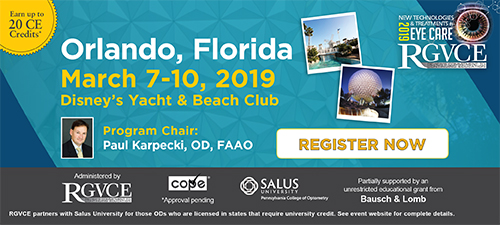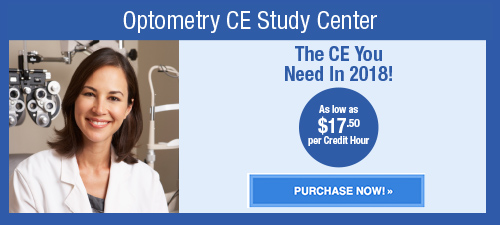
A
weekly e-journal by Art Epstein, OD, FAAO
OOff the Cuff: My Three Greatest Regrets…
As Optometric Physician nears our 20th year, you and I have spent many Saturday mornings together connected by Off the Cuff. You’ve often agreed with my thoughts and sometimes not, but over these long years of writing to you almost every week, I feel that many of you have become friends, real friends, who know me.
|
|||||
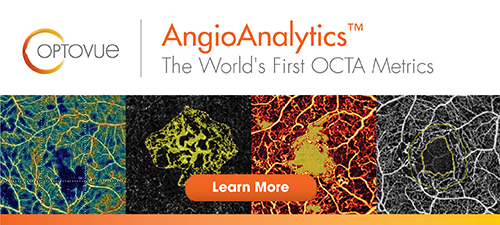 |
||
| Changes in Macular Drusen Parameters Preceding the Development of Neovascular Age-Related Macular Degeneration | ||||
This study assessed the rate of change in macular drusen load in fellow eyes of patients with unilateral neovascular age-related macular degeneration (AMD) to evaluate whether the change in drusen load determined the onset and type of choroidal neovascularisation (CNV). Subjects with unilateral neovascular AMD with a minimum of two years follow-up were identified retrospectively from the hospital electronic database. Drusen count, area and volume measurements at the macula of the contralateral eye were recorded using commercial software on Topcon 3D OCT-2000 devices over the previous two years. The mean rate of change of these parameters over time was compared between fellow eyes that converted to various CNV subtypes and those that did not.
Two hundred forty-eight patients met the inclusion criteria. Of these patients, 179 did not progress to neovascular AMD (Group 1) while 69 patients converted (Group 2) at the end of two years follow-up. Mean drusen volumes and drusen areas increased significantly in Group 2 in the second year by 0.031 mm3 (p<0.001) and 0.572 mm2 (p=0.002), respectively. However, there was no difference in the rate of change between the two groups at year one. Furthermore, for each 0.1 mm increase in the cubed root of baseline, mean drusen volume increased the odds of progressing to CNV by 40% (95% CI, 1.2 to 1.6; p<0.001). The increase in drusen volume was higher in the occult CNV group compared to classic CNV (p=0.048). Researchers wrote that a significant increase in mean drusen volume occured in eyes in the preceding 12 months prior to conversion to neovascular AMD and that this change was more significant in eyes with occult CNV. |
||||
SOURCE: Lamin A, Dubis AM, Sivaprasad S. Changes in macular drusen parameters preceding the development of neovascular age-related macular degeneration. Eye (Lond). 2019; Jan 24. [Epub ahead of print]. |
||||
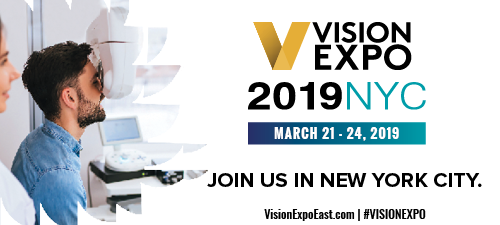 |
||
| Changes in Intraocular Pressure and Angle Status After Phacoemulsification in Primary Angle Closure Hypertension | ||||
A case series of 18 eyes of 18 patients was conducted to study the change in intraocular pressure (IOP) and angle status after phacoemulsification in a cohort of primary angle closure hypertension (PACHT) patients. Preoperative biometry including axial length, anterior chamber depth (ACD), lens thickness and central corneal thickness were studied. Preoperative and postoperative IOP, number of topical glaucoma medications, angle swept-source optical coherence tomography (SS-OCT) parameters of nasal and temporal angle opening distance, trabecular iris space area, scleral spur angle, lens vault and circumferential iridotrabecular contact (ITC) were studied and their correlations derived.
The mean preoperative IOP, 31mm Hg ± 6mm Hg, decreased to 14mm Hg ± 1mm Hg at six months postoperative period, a fall by 58% ± 14%. The number of glaucoma medications reduced from four (three to five) to two (one to three). All SS-OCT-studied parameters denoted significant angle widening postsurgery. The ITC% reduced from 52 (16 to 100) to 19 (0 to 97). The preoperative ITC showed moderate to strong correlation with all preoperative nasal and temporal angle parameters. It also showed moderate positive correlation with the percentage fall in IOP at one-month postoperative period. The preoperative ACD showed significant negative correlation with preoperative and postoperative ITC. Investigators wrote that PACHT patients benefited significantly from cataract surgery with marked angle widening, IOP reduction and a decrease in the number of glaucoma medications. They added that SS-OCT-derived circumferential iridotrabecular contact indexes could be used as the best parameter to indicate the preoperative angle status and predict postoperative changes in IOP, as against the numerous single-section-measured angle parameters. |
||||
SOURCE: Selvan H, Angmo D, Tomar AS, et al. Changes in intraocular pressure and angle status after phacoemulsification in primary angle closure hypertension. J Glaucoma. 2019;28(2):105-110. |
||||
|
|||
| Potential Metabolic Markers in Glaucoma and their Regulation in Response to Hypoxia | ||||
This study assessed novel differences in serum levels of glucose, lactate and amino acids in patients with normal-tension glaucoma (NTG) compared with age-matched controls, at baseline and in response to universal hypoxia. Twelve patients diagnosed with NTG and 11 control subjects underwent normobaric hypoxia for two hours. Peripheral venous blood samples were taken at baseline, during hypoxia and in the recovery phase. Serum glucose and lactate levels were measured by a blood gas analyzer. Amino acids were analyzed by high-performance liquid chromatography.
Baseline levels of lactate and total amino acids were significantly lower in patients with NTG compared with healthy controls. No differences were seen in blood glucose levels between the two groups. Lactate levels remained unchanged during hypoxia in the control group, but increased in patients with NTG. In the recovery phase, total amino acid levels were reduced in the control group, whereas no changes were found in patients with NTG. Reduced serum levels of lactate and total amino acids were identified as potential markers for NTG. Moreover, significant differential regulatory patterns of certain amino acids were found in patients with NTG compared to control subjects. Overall, researchers wrote, the results suggested a link between systemic energy metabolites and NTG, and supported a novel understanding of glaucoma as an inner retinal manifestation of a systemic condition. |
||||
SOURCE: Vohra R, Dalgaard LM, Vibaek J, et al. Potential metabolic markers in glaucoma and their regulation in response to hypoxia. Acta Ophthalmol. 2019; Jan 28. [Epub ahead of print]. |
||||
| News & Notes | |||||||||||||||
Q BioMed & Mannin Research Enter into Collaboration With McMaster University for Glaucoma Drug Candidate
|
|||||||||||||||
| Lutronic Initiates Preclinical Trial of R:Gen Laser for Treatment of Dry AMD Lutronic Vision announced it initiated a preclinical trial to determine the optimal setting for its R:Gen laser to treat the dry form of age-related macular degeneration. The company is aiming to bring to market its fully integrated laser platform designed to safely and precisely target the retinal pigment epithelium to regenerate and restore its function. Read more. |
|||||||||||||||
|
|||||||||||||||
|
|||||||||||||||
|
Optometric Physician™ (OP) newsletter is owned and published by Dr. Arthur Epstein. It is distributed by the Review Group, a Division of Jobson Medical Information LLC (JMI), 11 Campus Boulevard, Newtown Square, PA 19073. HOW TO ADVERTISE |


